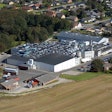
The grain crisis of 2011 appears likely to eclipse the severity of the 2008 event, but in a different way. In 2008, prices spiked to punishingly high levels that led to a short lived panic followed by plummeting grain prices. This time, instead of record high levels, prices are likely to be somewhat lower than in 2008, but persist for a much longer time. This will be more like a war of attrition in comparison to the blitzkrieg of 2008.
The inevitable subsequent fall in grain prices may be delayed for more than a year.
Corn is the best example of this long war of attrition. In 2008, corn spent just five weeks above $6 per bushel ($240 per ton), in Chicago during June and July and then fell to $3 by the end of 2008. This year, corn has been above $6 per bushel for five weeks. It is possible that corn could average $6 for the entire crop year of 2010-2011 and even for crop year 2011-2012, a total of 104 weeks.
This is a much more damaging scenario for the world’s animal industries than the five week duration in 2008. The likelihood of corn ever again falling to $3 per bushel is only slightly short of impossible. As can be seen on the graph, 2010-2011 will much worse than 2007-2008 and could be followed by a crop year that is just as bad.
Price of grain
The price of grain is high this year due to the usual problem of a mismatch between supply and demand. The supply of wheat was affected by drought in Russia and Argentina and by too much water in the United States. Russia, normally a large exporter of grain, shut their ports. Corn production in Argentina was reduced by drought. In the United States excessive rainfall reduced yields and led to a draw down of U.S. reserves.
On the demand side, a recovering world economy is consuming more feed grains including most notably, China. In addition, unsustainable subsidized burning of food, a.k.a. ethanol production, continues to expand unabated. Ethanol will consume 40% of the U.S. crop this year, corresponding to 125 million metric tons. At the end of the current crop year on August 31, 2011, there will be virtually no corn left in the U.S.
As bad as the current situation is, it could get even worse. Corn prices and indeed all grain prices from now on will be driven to a great degree by the prospects for the 2011-2012 U.S. corn crop.
At least 14 billion bushels (355 MMT) of corn are needed to allow prices to decline from current levels. In order to accomplish this, 92 million acres of corn will need to be planted and those acres will have to yield 166 bushels of corn per acre. For comparison, in this crop year, 88 million acres were planted with a yield of 153 bushels per acre. These increases in acres and yield would seem, at first glance attainable given high corn prices and the normally better yield after a year with a poor yield. However, at this point, the goal appears to be difficult to attain.
Yield of 166 bushels
As can be seen in the depiction of of corn yields (Figure 1), a yield of 166 bushels would fall above the trend line. Even in 2012 a yield of 166 bushels per acre would be considered exceptional. It is also important to note that the Midwest is primarily non-irrigated crop land and output depends on timely rains. Throughout recorded history, droughts occur with regularity in the American Midwest. During the period between 1971 and 1988, for example, there were four years when the crop was reduced due to drought and yet for the last 23 years no prolonged drought has occurred. The Midwest is clearly overdue for a crop-reducing weather event.
Although long-range forecasting is notoriously inaccurate, many experts consider that the northern Corn Belt will be too wet and too cool for an early start to planting this year. As a result, there will be significant delays in planting in some areas. The snow will take a long time to melt and the ground will take a long time to warm up.
Under the current La Niña system, the summer is likely to be warmer and drier than normal. As a result, late-planted corn and soybeans will be vulnerable to summer dryness. Just how much La Niña will impact crop production is unknown and depends on timing. Nevertheless, the scenario projected by meteorologists suggests that 166 bushels is no sure thing this year. The best that can be anticipated at this point is the trend yield of 162 bushels.
92 Million Acres
What about the amount of land going into corn? Given high prices for soybeans, wheat and cotton it is unlikely that corn will be able to increase by four million acres from the 88 million planted last year. It is already known that record high prices for cotton will impact corn acreage in the Southern states. Therefore, a net gain of 3 million acres would appear to be more likely this year.
With 91 million acres and a yield of 162 bushels, a harvest of 13.5 billion bushels can be expected at this time. This corresponds to the same use of corn this year. With more corn going to ethanol, less will be available for animal feed and exports, and the ending inventory will be no better than the record low level this year. If the projected scenario proves to be true, corn prices will continue to be unusually high through the 2011-2012 crop year.
If the preceding scenario proves to be correct, the expected world increase in production of animal protein will be trimmed once again. Meat prices will be higher and the resulting demand from consumers will be lower than otherwise would be expected. The production of beef will continue to decline worldwide and the expected increase in the production of pork and chicken could be reduced or delayed for a year.
A silver lining to the dark cloud of high grain prices is that there will be a powerful incentive to increase grain production around the world. Within a year or two at the most, significant production increases can be expected and the price of grain will surely decline. The difference from 2008 is that the drop may not come quite as quickly.


















